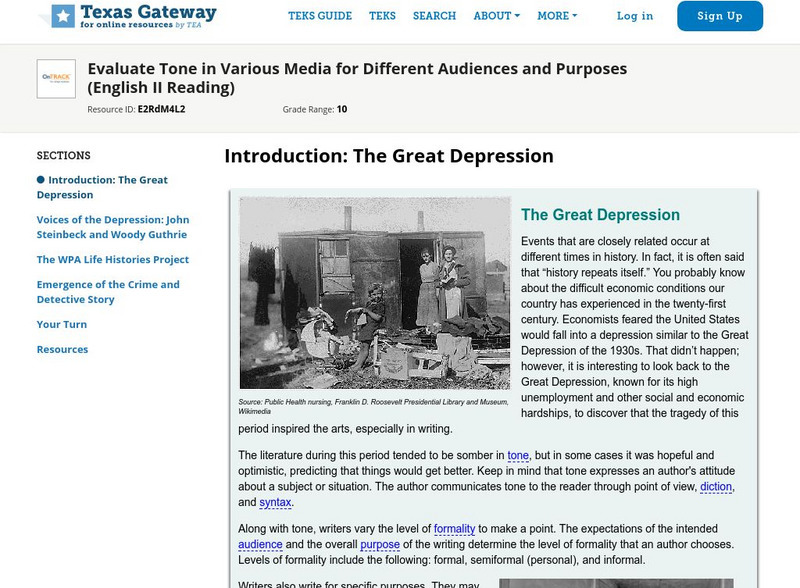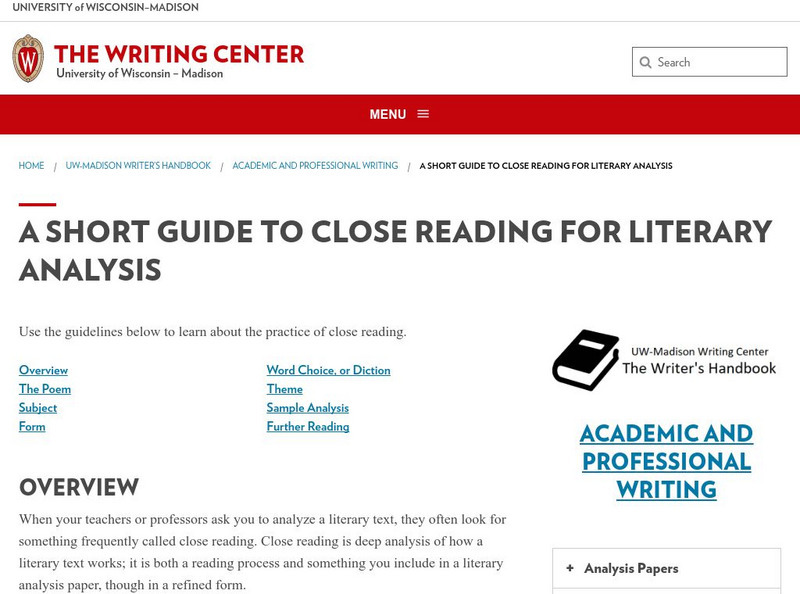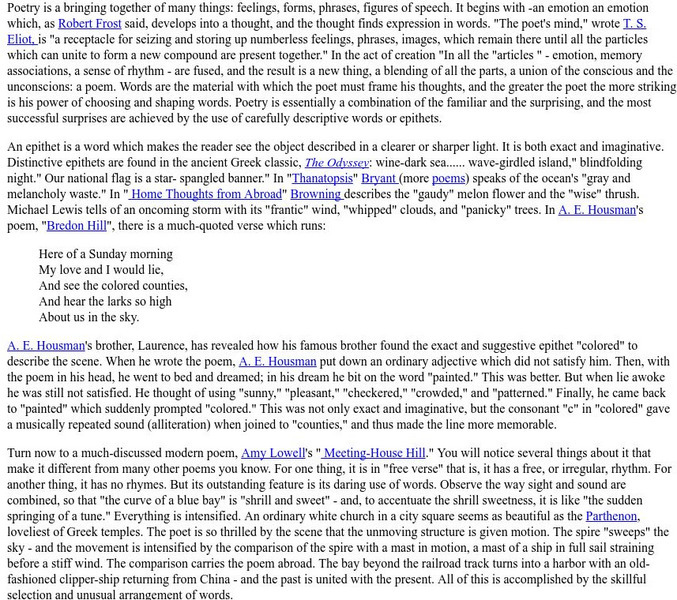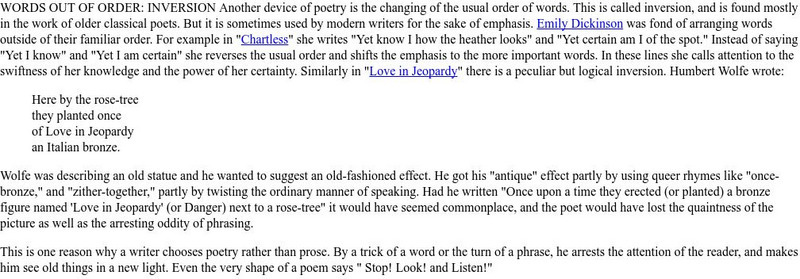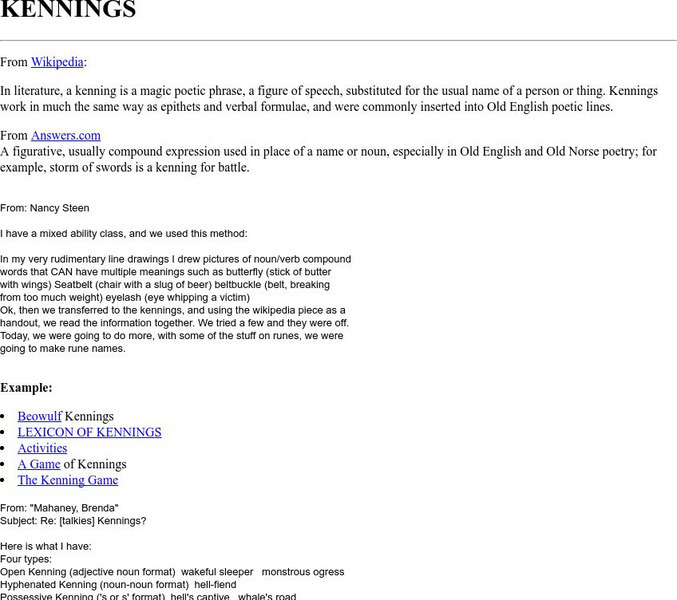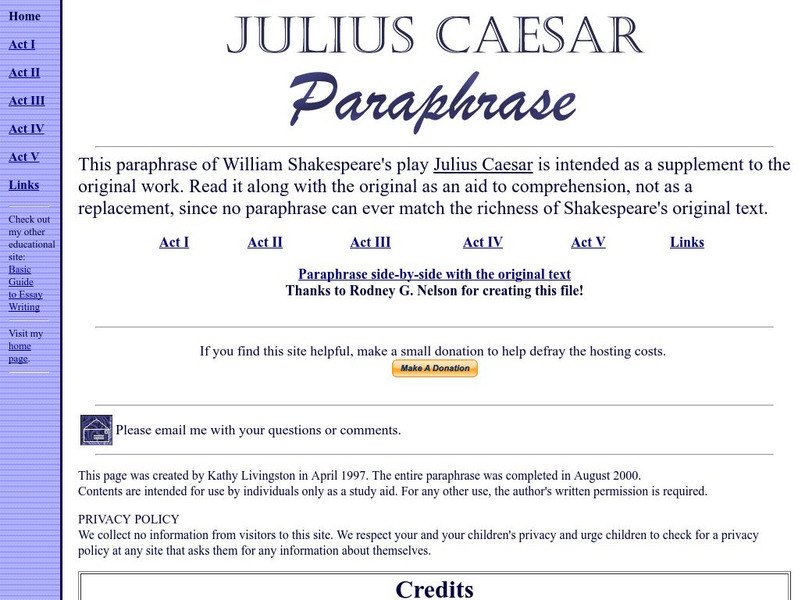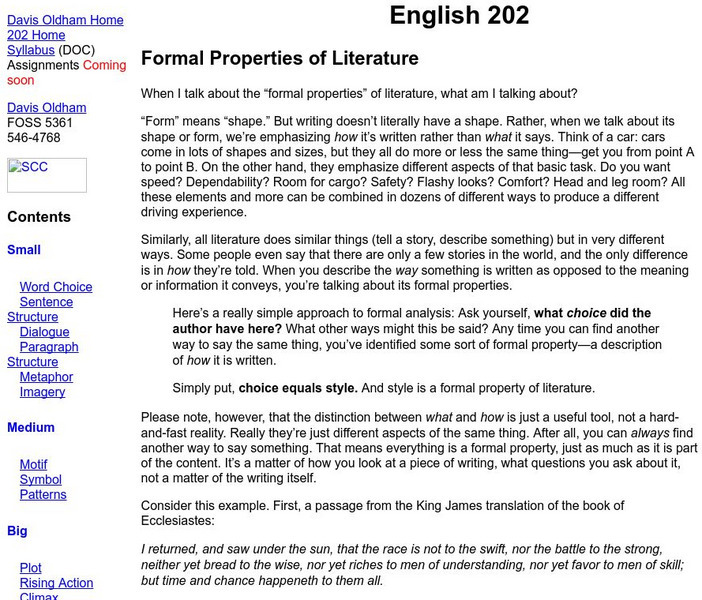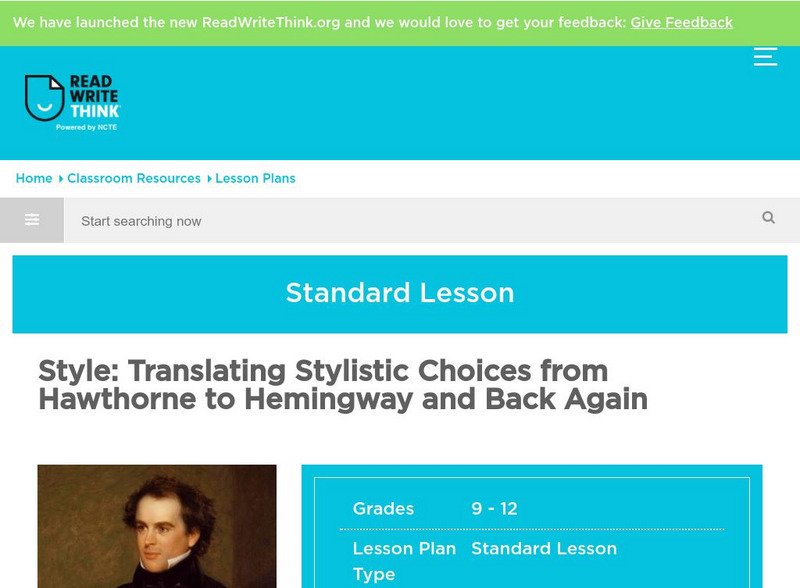Hi, what do you want to do?
Texas Education Agency
Texas Gateway: Diction and Tone (English Ii Reading)
This lesson will help students identify diction and tone in their reading and will help them answer these questions: What does the author mean? What is the author's attitude about what he or she is writing? How will my understanding of a...
Texas Education Agency
Texas Gateway: Diction and Tone (English Iii Reading)
[Accessible by TX Educators. Free Registration/Login Required] In this lesson, students will learn how to find the tone in a passage using a close reading strategy. They will also look at diction and discover that examining a writer's...
Texas Education Agency
Texas Gateway: Evaluate Tone in Various Media for Audiences and Purposes
This lesson will help you evaluate changes in formality and tone within printed texts written for specific audiences and purposes. It focuses on writing produced during the Great Depression. RL.9-10.4 Word choice, Tone
Texas Education Agency
Texas Gateway: Analyze Use of Stylistic a Rhetorical Details
[Accessible by TX Educators. Free Registration/Login Required] In this lesson, you are going to learn to comment on writing composed by writers who are aesthetic types, writers who use language to bring images to our minds as we read....
Texas Education Agency
Texas Gateway: Literary Terminology: Practice 5 (English I Reading)
[Accessible by TX Educators. Free Registration/Login Required] To be "in the know" in literature, you need to know the terminology used to describe, interpret, and analyze poetry, drama, and fiction. As you proceed through the sections...
University of Wisconsin
Univ. Of Wisconsin: Writing Center: Guide to Close Reading for Literary Analysis
This guide discusses how to approach analysis of a literary text, with the main focus being on the poem "Design" by Robert Frost. It explains how to examine the subject, the form, word choice or diction, and the theme. In each section,...
Thinkport Education
Thinkport: Read Like This: A Strategy for Analyzing Literary Nonfiction
Read, analyze and answer text-dependent questions about several excerpts from a famous slave narrative called The Interesting Narrative of the Life of Olaudah Equiano.
Texas Education Agency
Texas Gateway: Write Literary Text Using Strategies to Enhance Style & Tone
A learning module that teaches students about using literary devices to enhance style and tone in four lessons: Introduction, Style in Literature, Tone, and Your Turn.
Texas Education Agency
Texas Gateway: Tone, Style, and Figurative Language: Practice 5
A learning module that teaches students about tone, style, and figurative language in five mini-lessons: Introduction, Identifying Diction Indicating Tone, Identifying Figurative Language, Spotting Jarring Departures from Tone in Diction...
Ted Nellen
Cyber English (By Ted Nellen): Alliteration
This site fully explores the term "alliteration." Content includes a definition, examples in literature, and a look at why and how it has been used throughout literary history.
Ted Nellen
Cyber English (By Ted Nellen): Asyndeton
This is a glossary entry for the term "Asyndeton" including definitions, an example, and links to more information.
Ted Nellen
Cyber English (By Ted Nellen): Characterization
This is a glossary entry for the term "Characterization" including a definition and the characteristics to be developed: Character's appearance, actions, thoughts, voice, and reaction from others.
Ted Nellen
Cyber English (By Ted Nellen): Chiasmus
This is a glossary entry for the term "Chiasmus" including a definition and examples.
Ted Nellen
Cyber English (By Ted Nellen): Epithet
This is a glossary entry for the term "Epithet" including definitions and examples from a number of poets.
Ted Nellen
Cyber English (By Ted Nellen): Inversion
This is a glossary entry for the term "Inversion" including definition and literary examples.
Ted Nellen
Cyber English (By Ted Nellen): Kennings
This is a glossary entry for the term "Kennings" including multiple definitions and examples including links to more examples.
Ted Nellen
Cyber English (By Ted Nellen): Syllepsis
This is a glossary entry for the term "Syllepsis" including definitions and links to more information and examples.
Writing Fix
Writing Fix: The Backwards Writing Assignment
In this lesson students will create a backwards poem based on descriptive settings and characters.
Other
Julius Caesar Paraphrase
A scene-by-scene paraphrase of Shakespeare's Julius Caesar in two formats. You can proceed act by act through the paraphrase, or you can view the original text and the paraphrase side by side in a PDF document. RL.9-10.4 Word choice, Tone
Other
Shoreline Community College: Formal Properties of Literature
As students become more aware of text complexity, an understanding of the formal properties of literature becomes more important. This is an excellent examination of the kinds of choices writers make that change the way readers receive...
ReadWriteThink
Read Write Think: Style Choices of Hemingway and Hawthorne
Lesson plan which helps students understand the impact of the literary element of style on a piece of writing. Students read and analyze the works of Ernest Hemingway and Nathaniel Hawthorne. L.11-12.3 Language Functions/Style,...
University of Victoria (Canada)
The U Vic Writer's Guide: Literary & Rhetorical Terms
A comprehensive list of literary terms from the University of Victoria that will give students definitions and examples of how they are used. Terms are sorted by category. L.11-12.4d Verify meaning
Grammarly
Grammarly Blog: Idioms and Phrases
An explanation and examples of idioms and how to use context clues to understand their meanings.
Grammarly
Grammarly Blog: Idioms and Their Meanings
An explanation and examples of idioms and their geographic ties.







